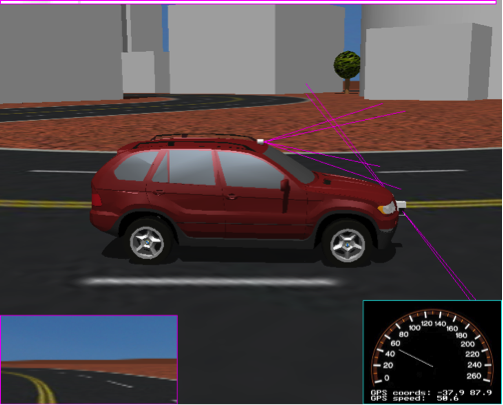
The goal of this project is to develop a powerful, flexible, faithful tool for simulating intelligent vehicles.
Today’s vehicles integrate always more driving aids: GPS guidance, parking radar, blind-spot sensors, lane departure warning signals, frontal collision avoidance systems, pedestrian detection, etc. The trend goes in the direction of vehicles that can drive entirely by themselves without any human intervention.
Car manufacturer and research laboratories have looked into neighbouring areas in order to achieve this goal. It appeared that mobile robotics was a premier source of inspiration, indeed a quick technology transfer occurred at sensory and algorithmic levels for on-board operation. Starting from this observation, the idea of this project is to transfer also the modelling methods and tools (i.e. simulation tools) already well known in mobile robotic, to the intelligent vehicle scenario.
A state-of-the-art mobile robotic simulator will be taken as a baseline, and vehicle and sensor models typically used in the automotive research and industry will be added. Models will be calibrated and verified to match the reality. Sophisticated road and city environments will be created for the testing and the validation of developed models and algorithms.
This research project will last two years and will be carried out by the Distributed Intelligent Systems and Algorithms Laboratory of Prof. Alcherio Martinoli in collaboration with Cyberbotics, a start-up from EPFL, and Groupe PSA. It is supported by the Commission for Technology and Innovation.
| Principal investigator | Prof. Alcherio Martinoli |
|---|---|
| Project manager | Olivier Michel |
| Sponsor | Commission for Technology and Innovation |
| Period | 2014-2015 |
| Laboratory | DISAL |
| External partners | Cyberbotics, Groupe PSA |
| Collaboration | TRACE |